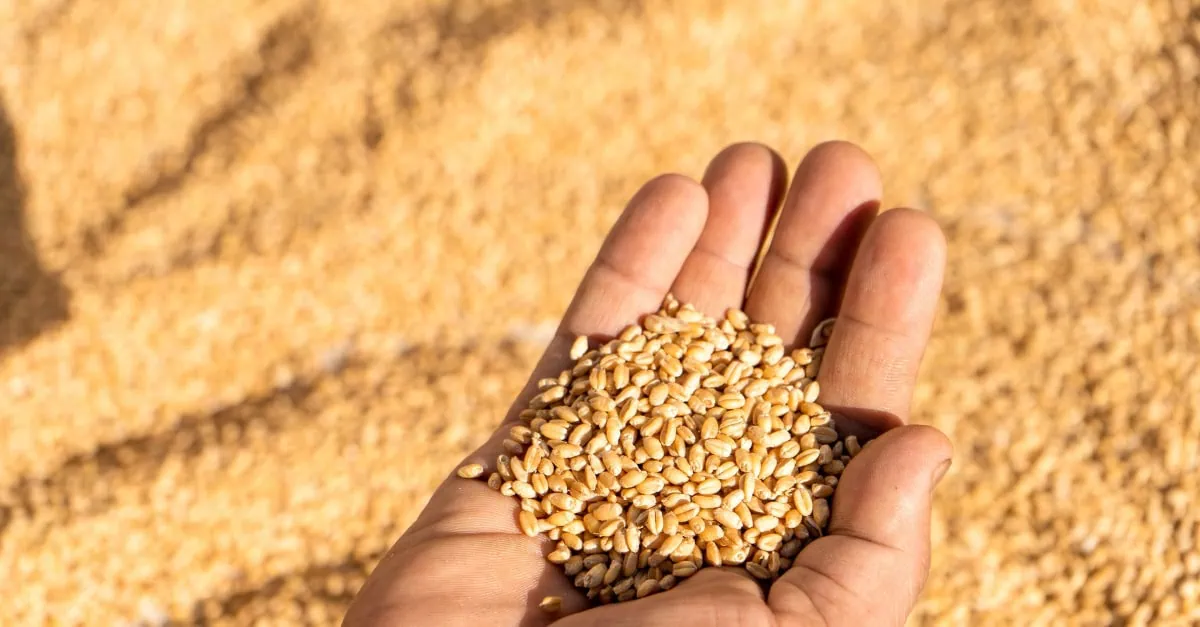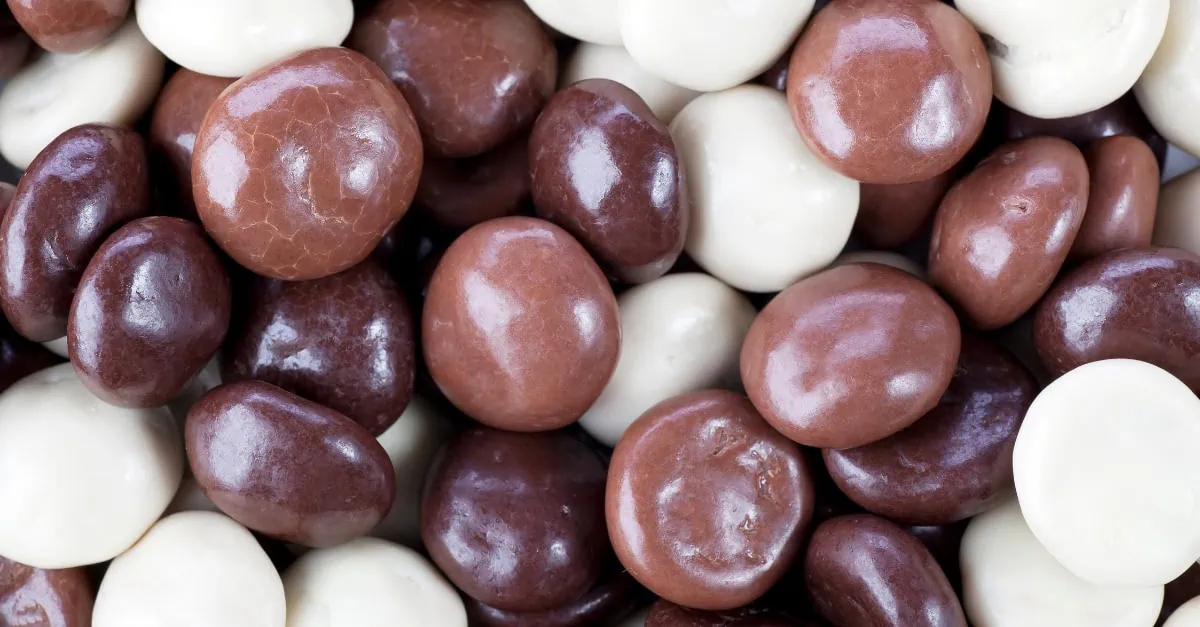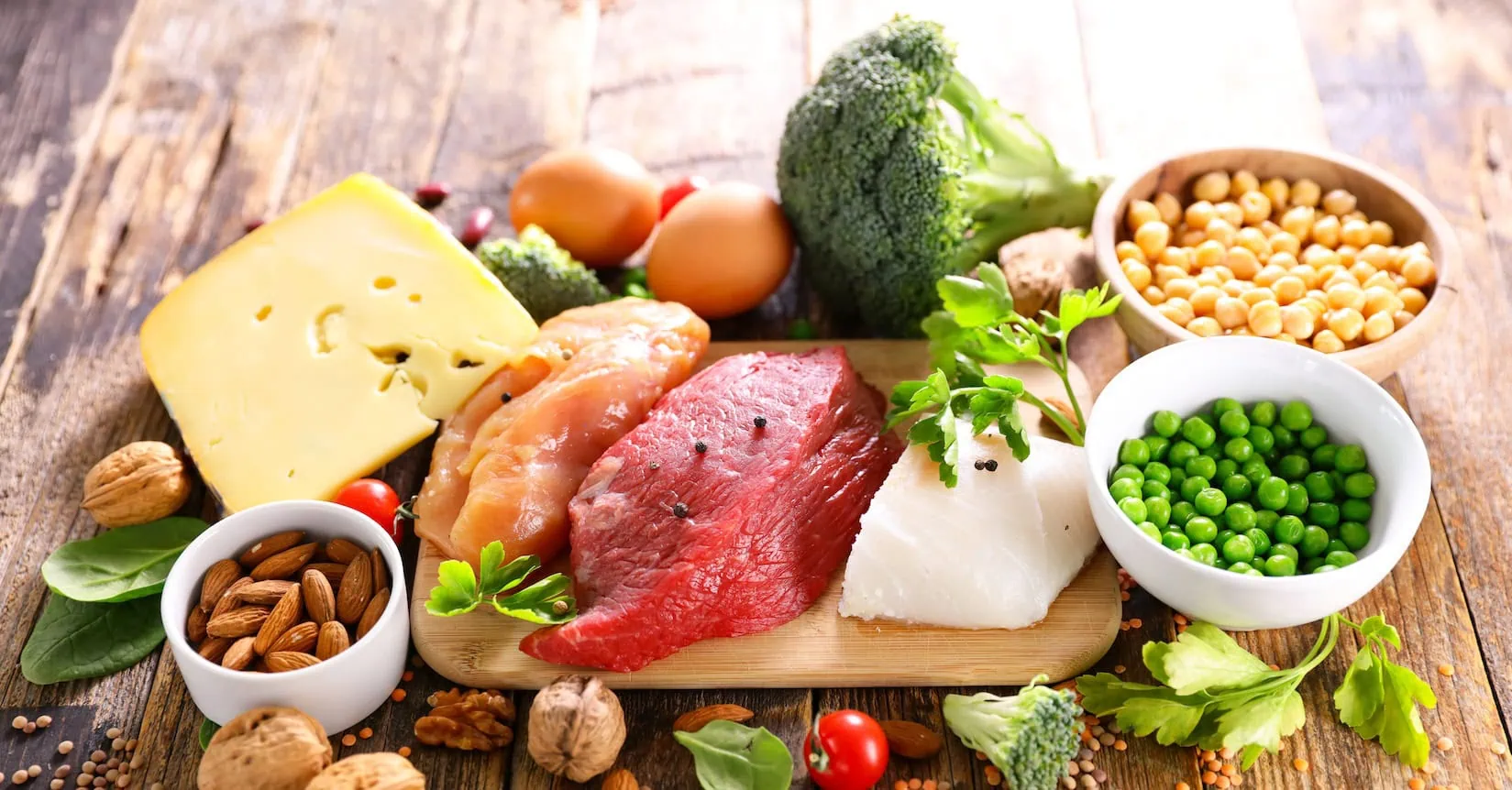Understanding wheat classifications is critical for FMCG procurement managers. Each wheat type affects product quality, costs, and margins differently. This guide breaks down four main wheat categories hard, soft, durum, and milling wheat detailing their uses, producing regions, price drivers, and seasonal buying patterns.
1. Hard wheat
Hard wheat encompasses several varieties known for high protein content and strong gluten development, making them essential for commercial yeast-leavened products and large-scale bread manufacturing.
Hard Red Winter (HRW)
Primary uses: Commercial bread flour, industrial all-purpose flour, pizza dough production
- Most widely used wheat in industrial baking operations
- Protein content typically 11-14% for consistent bread quality
- Excellent gluten strength for large-scale bread production
Key producing regions:
- United States (Great Plains): Kansas, Nebraska, Colorado, Oklahoma
- Accounts for approximately 40% of total US wheat production
- Argentina and parts of Europe also produce significant quantities
Price drivers:
- Weather conditions in the US Great Plains
- Global bread wheat demand
- Competition from Russian and Ukrainian wheat exports
- US dollar strength affecting export competitiveness
Seasonal patterns: Hard Red Winter follows typical winter wheat seasonality patterns crucial for procurement planning. Wheat prices typically strengthen from February through June as markets assess crop conditions and weather impacts. The harvest period (June-July) brings seasonal lows, with wheat prices often bottoming in August-September—the optimal time for strategic wheat buying. Winter wheat prices then gradually strengthen through fall and winter months, making forward contracting strategies essential for cost management.
Vesper pricing coverage:
- Wheat, HRW (various protein levels: 11%, 11.5%, 12%)
- Wheat, HRW, Milling
- Hard Wheat (general category)
Hard Red Spring (HRS)
Primary uses: Premium commercial bread flour, protein blending for industrial applications
- Higher protein content than HRW (typically 13-16%) for superior baking performance
- Commands premium prices due to exceptional bread-making qualities and consistent protein levels
- Preferred for artisan bread operations and high-end commercial baking
Key producing regions:
- United States: North Dakota, Minnesota, Montana, South Dakota
- Canada: Prairie provinces (CWRS – Canadian Western Red Spring)
- Represents about 25% of US wheat production
Price drivers:
- Spring planting conditions in Northern Plains
- Protein premiums based on crop quality
- Export demand, particularly from Asia
- Competition with Canadian spring wheat
Seasonal patterns: Spring wheat shows different seasonal pricing patterns than winter wheat, critical for procurement timing. Wheat prices typically decline from January through March, then rise during the critical spring planting and growing period (April-July) due to weather uncertainty. Harvest pressure brings wheat prices down in August-September, with gradual recovery through fall—making this the prime window for annual contract negotiations.
Vesper pricing coverage:
- Wheat, HRS (various specifications)
- Wheat, HRS N.1
- Wheat, DNS (Dark Northern Spring)
- Wheat, DNS N.1
2. Soft wheat
Soft wheat varieties contain less protein and produce weaker gluten, making them perfect for tender baked goods in large-scale food manufacturing operations.
Soft Red Winter (SRW)
Primary uses: Industrial cake production, commercial cookies, cracker manufacturing, pastry operations
- Lower protein content (9-11%) ideal for tender texture in baked goods
- Produces consistent tender crumb structure for large-scale production
- Generally trades at discount to hard wheat, offering cost savings for price-sensitive applications
Key producing regions:
- United States: Eastern states including Ohio, Illinois, Missouri, Indiana
- Europe: France, Germany, United Kingdom
- Argentina (some production)
Price drivers:
- Domestic flour demand for baked goods
- Export competition from European and Black Sea origins
- Quality factors including test weight and falling number
- Substitute competition from corn for feed uses
Seasonal patterns: SRW follows winter wheat seasonality patterns with regional variations important for sourcing decisions. Eastern US harvest occurs earlier (June) than Plains wheat, creating early supply opportunities. Wheat prices typically show harvest lows in July-August, then gradual strengthening through fall and winter, making summer the optimal procurement window for cost-conscious buyers.
Vesper pricing coverage:
- Wheat, SRW (various specifications)
- Soft Wheat (general category)
- Soft Wheat, Bread
- Soft Wheat Flour (various protein levels: 11%, 11.5%, 13%, 14%)
Soft White Winter (SWW)
Primary uses: Asian noodle production, commercial crackers, export-focused pastry manufacturing
- Milder flavor profile than red wheat varieties, preferred for neutral-taste applications
- Strong export demand from Asian markets, particularly for noodle manufacturing
- Premium pricing for specific end-uses despite lower protein content
Key producing regions:
- United States: Pacific Northwest (Washington, Oregon, Idaho)
- Limited to specific geographic regions with suitable climate
Price drivers:
- Asian import demand, particularly Japan and Southeast Asia
- Competition with Australian white wheat
- Regional production conditions in Pacific Northwest
- Ocean freight rates to Asia
Seasonal patterns: Pacific Northwest harvest occurs in July-August, creating supply concentration risk. Wheat prices often strengthen in fall as Asian buyers increase purchases for the new marketing year. Winter months can see price pressure if export pace slows, creating potential buying opportunities for flexible procurement strategies.
Vesper pricing coverage:
- Wheat, SWW (various protein levels: 10.5%, 11%)
- White Winter wheat specifications
3. Durum wheat
Durum wheat is botanically distinct from other wheat classes and commands the highest premium prices for specialized food manufacturing applications.
Primary uses: Commercial pasta production, couscous manufacturing, bulgur processing, semolina flour
- Highest protein content (13-16%+) among all wheat types for superior pasta texture
- Unique amber color and firm texture essential for premium pasta products
- Not interchangeable with bread wheat—requires dedicated sourcing strategies
Key producing regions:
- United States: Primarily North Dakota, with some Montana production
- Canada: Saskatchewan and Alberta
- Mediterranean: Italy, Turkey, Algeria, France
- Accounts for only 2-5% of total US wheat production
Price drivers:
- Pasta consumption trends in North America and Europe
- Mediterranean production conditions affecting global supply
- Premium quality specifications (color, protein, vitrineous kernels)
- Limited acreage and specialized growing regions
Seasonal patterns: Durum follows spring wheat seasonality in North America with limited supply flexibility. Wheat prices typically strengthen from January through July as markets assess the small crop and weather conditions. Harvest occurs in August-September, bringing seasonal price pressure and the best procurement opportunities. Fall and winter often see gradual price recovery as supplies tighten—making harvest-time contracting essential for cost management.
Vesper pricing coverage:
- Durum Wheat (various specifications)
- Durum Wheat Flour, Baking
- Durum Wheat, Kazakh
- Durum Wheat, 1 CWAD (Canadian Western Amber Durum)
- Multiple protein specifications (11%, 11.5%, 12%, 12.5%, 13.5%)
4. Milling wheat
Milling wheat represents quality-graded wheat suitable for commercial flour production, sourced from various wheat classes (such as hard or soft wheats) or blends that meet strict milling specifications, essential for FMCG operations requiring consistent performance.
Primary uses: Commercial flour production, industrial food-grade applications, consistent quality manufacturing
- Meets strict quality standards for cleanliness, protein consistency, and processing characteristics
- Excludes damaged, sprouted, or feed-grade wheat that could compromise product quality
- Baseline specification for commercial flour mills and food manufacturing operations
Key producing regions:
- Any wheat-producing region can supply milling-grade wheat
- Quality standards vary by country and end-use requirements
- European Union, United States, and Canada have established grading systems
Price drivers:
- Flour demand from food processing industry
- Quality premiums over feed-grade wheat
- Local milling capacity and competition
- Import/export basis relationships
Seasonal patterns: Milling wheat pricing follows underlying wheat class seasonality with additional quality premiums. Harvest periods typically bring the smallest quality spreads as new-crop supplies are abundant and high-quality. Quality premiums often widen during mid-marketing year as best-quality supplies diminish—making early-season contracting advantageous for quality-sensitive operations.
Vesper pricing coverage:
- Wheat, Milling (various protein specifications)
- Wheat, Milling >=10.5% Pro
- Wheat, Milling >=11% Pro
- Wheat, Milling 11.5% Pro
- Wheat, Milling 12.5% Pro
- Wheat, Milling >13% Pro
- Wheat, Milling >13.8% Pro
- Wheat, Milling, Bread
- Wheat, Milling, Other
Best practices for wheat procurement
Wheat quality specifications matter more than wheat type for many industrial baking applications. A high-quality SRW might outperform a poor-quality HRW for specific manufacturing uses.
Protein content drives wheat pricing dynamics within each wheat class. Higher protein commands premiums, but evaluate whether your industrial applications require the extra cost through thorough cost-benefit analysis. Easily calculate what gives you better margins with Vesper’s Cost Models, which let you compare ingredient costs, in-house production expenses, and real-time market prices for smarter sourcing decisions.
Origin premiums reflect quality consistency and supply chain reliability crucial for large-scale operations. US wheat often trades at premiums to Black Sea origins due to quality reliability and logistics advantages.
Strategic seasonal buying patterns can significantly impact procurement costs and ingredient budgets. Purchasing during harvest months (August-September for most wheat) typically offers the best wheat prices and maximum cost savings.
Forward contracting opportunities exist during key seasonal periods when farmers and elevators offer competitive new-crop pricing, essential for annual budget planning and cost management. On Vesper, you can also view the latest forward contract prices, giving you real-time visibility into future market trends and helping you lock in optimal rates. More information about forward pricing.
Advanced wheat procurement technology and market intelligence. Follow EarthDaily Agro satellite monitoring and LeftField Commodity Research market analyses through Vesper’s platform for crucial crop intelligence. These partnerships provide essential insights into crop conditions, weather impacts, and seasonal trading patterns that directly affect wheat procurement decisions and cost optimization strategies.
Leverage real-time wheat pricing and AI-driven price forecasting. Vesper provides real-time prices for all wheat types mentioned above, plus AI-driven price forecasts to help you anticipate market movements and optimize procurement timing.
These prices can be integrated into comprehensive cost models that factor in all raw materials, plus non-ingredient costs like labor, overhead, and profit margins, giving you complete visibility into how wheat price changes impact your final product costs and competitive positioning.
Comprehensive wheat derivatives sourcing. Vesper also tracks pricing for processed wheat products that may better suit your manufacturing operations:
- Wheat Flour (soft wheat flour, durum wheat flour, and specialty grades for specific applications)
- Wheat Bran and Wheat Middlings (valuable co-products from milling operations)
- Vital Wheat Gluten (concentrated protein for texture enhancement and product improvement)
- Wheat Starch (extracted carbohydrate for specialized food manufacturing applications)
- Buckwheat/Buckwheat Flour (alternative grain for specialty and health-focused products)
Even though wheat is the main cost driver, derivatives sometimes go “off-script” from raw wheat pricing, and that’s when a smart buyer can take advantage. In some cases, price adjustments for derivatives lag behind moves in base wheat, creating procurement opportunities when derivative pricing temporarily disconnects from underlying wheat trends.
Understanding these four wheat categories hard wheat, soft wheat, durum wheat, and milling wheat, provides the foundation for making informed wheat procurement decisions that optimize both product quality and ingredient costs in industrial baking and FMCG operations.



